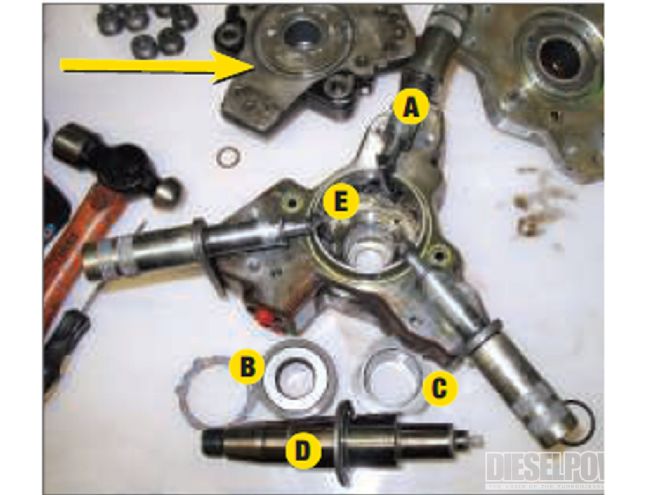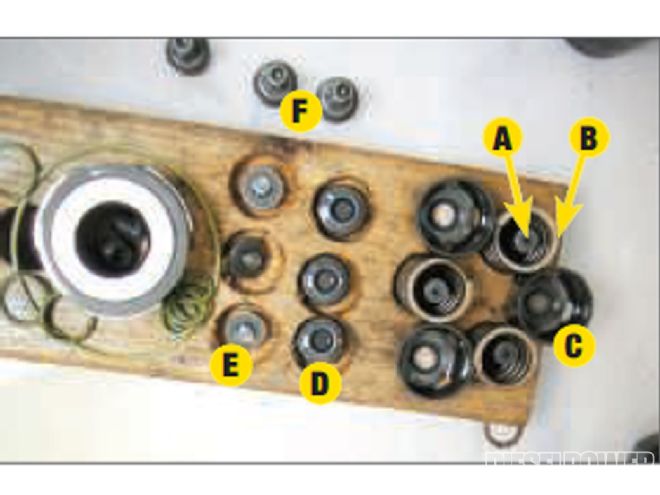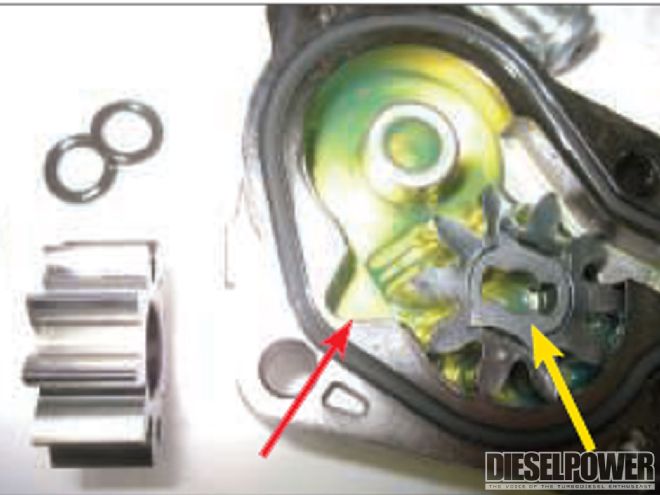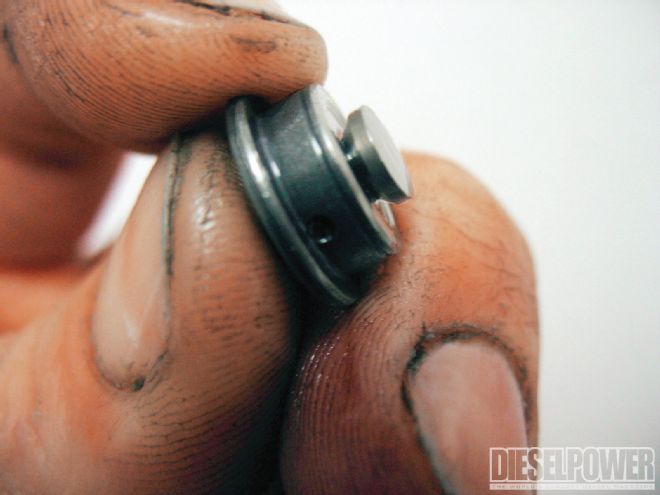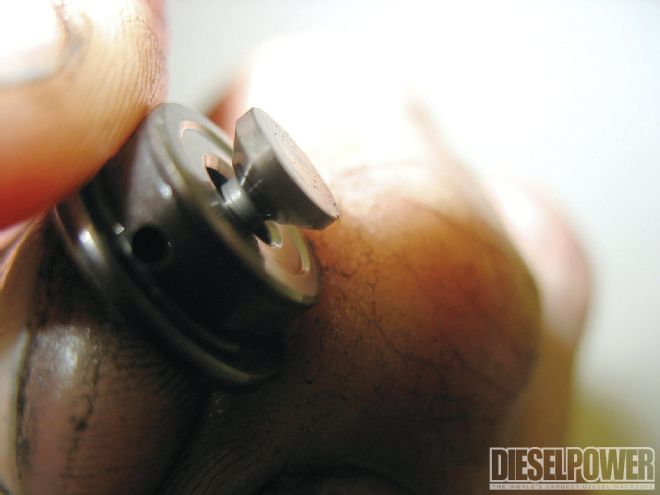High-pressure common-rail injection technology has revolutionized the diesel industry. Over the last decade, it has allowed engine builders to run higher injection pressures (as much as 29,000 psi in the new LML Duramax and 6.7L Power Stroke) in order to increase efficiency, while greatly reducing emissions. Use of the common-rail system has also facilitated multiple injection events (making diesels quieter). The icing on the cake is that these cleaner-burning engines make much more power than their predecessors.

| the Heart Of Common Rail Injection common Rail Injection System
In the case of the ’01-to-’10 Duramax and ’03-to-present Cummins, the heart of the common-rail system has been the Bosch CP3. Unlike previous (pre-common-rail) injection pumps, it has fewer tasks to perform. The CP3 injection pump’s sole job is to create and regulate high-pressure fuel (it’s not timed with the engine’s crankshaft and camshaft). The fact that the CP3 came from Bosch’s heavy-duty line of injection pumps also speaks to its great reliability, as it was designed to play a vital role in million-mile engines.
Through the years, we’ve talked about how these radial piston pumps work and pointed out when you need to consider upgrading. Now, for the first time, and with help from the experts at Bosch Motorsport and Motorsport Diesel, we’re able to take you inside the CP3 injection pump, explain its functionality, and show you what needs to be upgraded. With a unit from an LBZ Duramax disassembled, you’ll see which internal components typically get modified to support high-horsepower applications.
Low-Pressure Circuit
In order to talk about the modified injection pumps available in the aftermarket, which feature increased displacement (i.e. stroker pumps), we first have to understand the CP3 pump’s functionality. This diagram (which shows the low-pressure fuel circuit on the right side of the pump) is similar to what you’d see in a Bosch CP3.3 NH pump, which is the model used on an LBZ Duramax. First, low-pressure fuel enters the gear pump (A). The gear pump’s purpose is to feed the high-pressure pump. The maximum flow rate of the gear pump is limited by the calibrated suction throttle (B) to avoid an overload scenario at the overflow valve (C). The overflow valve returns fuel to the gear pump inlet, provides lubrication for the pump, and keeps pressure in front of the metering unit (D) constant. The metering unit, also known as the MPROP, FCA, or fuel pressure regulator, regulates the maximum flow rate the CP3 delivers to the rail. The zero delivery throttle (E) exists for instances in which no additional fuel is required in the rail. It routes diesel that is designed to leak out of the metering unit (when it’s in the closed position) away from the plungers in the pump and back to the gear pump inlet.

| the Heart Of Common Rail Injection low Pressure Circut Diagram
*The zero delivery throttle’s return route is the main difference when comparing a CP3 from a Duramax to a unit found on the 5.9L and 6.7L Cummins. On a Cummins CP3, the zero delivery orifice routes the leaked fuel back to the return, instead of the gear pump inlet.
High-Pressure Circuit
In this diagram, you can see the flow of the high-pressure fuel circuit. Once through the metering unit, fuel makes its way to the suction valves (A). The suction valves are located at the top of the plungers (B) and allow fuel to enter each of the pump’s three cylinders. Finally, the high-pressure valves (C) send pressurized fuel out to the rail.

| the Heart Of Common Rail Injection high Pressure Circut Diagram
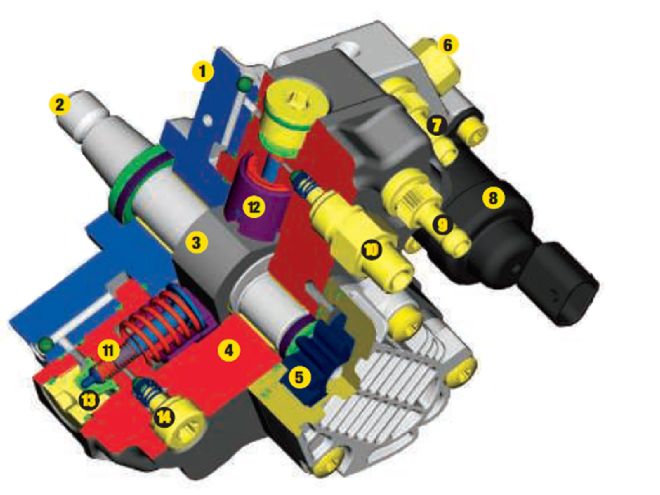
| the Heart Of Common Rail Injection cp3 Pump Diagram
Vital components on the CP3
1. Flange
2. Shaft
3. Polygonal ring
4. Housing
5. Gear pump
6. Overflow valve
7. Low-pressure inlet
8. Metering unit
9. Backflow connector
10. High-pressure connector
11. Plunger
12. Bucket
13. Suction valve
14. High-pressure valve (out to rail)
Stroker Pump Ingredient 1: Increased Stroke
Increasing displacement in any pump, engine, or injector comes down to two things: bore and stroke. The most common method for adding displacement to a CP3 is to increase its stroke from 8.2 mm to 10 mm. Aftermarket companies typically draw the line here because it’s just about as far as you can go and still be able to use genuine Bosch parts. Much past 10 mm of stroke and the OE polygonal ring will no longer fit.

| the Heart Of Common Rail Injection injector Comparison
Stroker Pump Ingredient 2: Machined Buckets
Because the plunger is now traveling farther (thanks to increased stroke), the buckets require some machining. It may be hard to see here, but the bottom of the bucket on the left has been machined and is shorter than the stock one on the right. The option to shorten the plunger is on the table for pump builders, but according to Bosch, a lot of efficiency can be lost by doing it.

| the Heart Of Common Rail Injection bucket Comparison
Stroker Pump Ingredient 3: Suction Valves
One component that substantially limits fuel flow in stock form is the suction valve. Fortunately, it’s another area where added stroke helps out greatly. When you compare the suction valve in both of these photos, you can see the one on the right sits further away from its seat. Because the suction valves are responsible for allowing fuel into the cylinders, stroking them provides much more flow. One of the drawbacks here is that the valve seat wear increases (causing the suction valve to wear out sooner)—and while the pump will still last a while, longevity is sacrificed.
Stroker Pump Ingredient 4: Metering Unit
Modifying the metering unit (also known as the MPROP, FCA, or fuel pressure regulator) is very common because it’s responsible for the quantity of diesel that feeds the high-pressure side of the pump. It regulates the flow to the high-pressure pump, and ultimately the injectors. Porting the valve piston on the metering valve is a typical means of modifying it, but other proprietary modifications may also exist. The end goal is to keep the plungers as full of fuel as possible, yet still be able to regulate it.

| the Heart Of Common Rail Injection metering Unit
*Other low-pressure modifications include: enlarging the ports on the gear pump and modifying the overflow valve to increase internal pressure.
Displacement, Flow, and Pump Differences
All factory CP3s share the same displacement. However, due to slightly higher efficiency right out of the box, the Duramax pump will flow 195 to 200 lph on a flow bench, while a Cummins pump will put out 180 to 185 lph.
A stroker CP3 can flow as much as 260 to 270 lph. So your average aftermarket pump can yield 30 to 35 percent more flow than a stock pump, and as much as a 22 percent displacement increase. While that increase may not sound like a lot, in reality it is quite substantial, given that very little reliability is sacrificed.
It has to be noted that CP3s can’t be rebuilt. Only brand-new pumps or good used cores can be transformed into stroker pumps.
 | the Heart Of Common Rail Injection cp3 Pump Diagram
Vital components on the CP3
| the Heart Of Common Rail Injection cp3 Pump Diagram
Vital components on the CP3